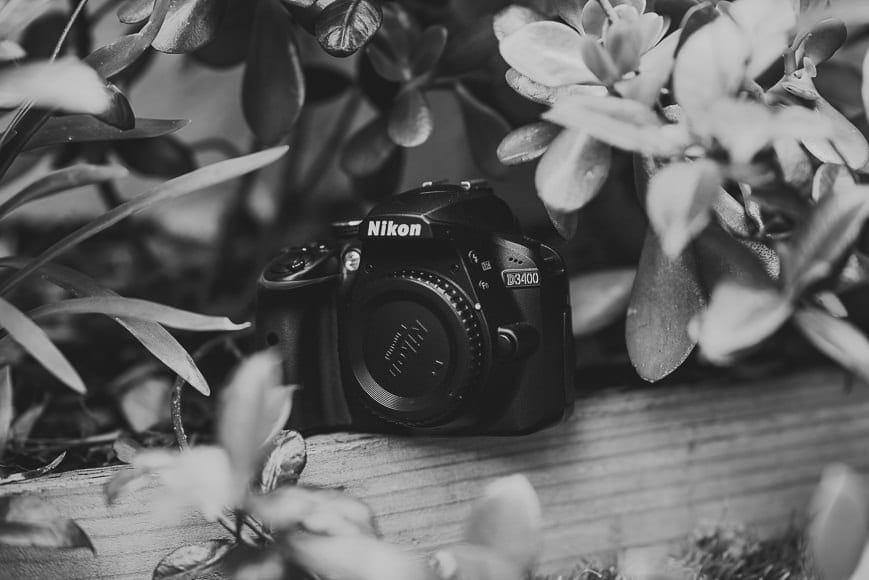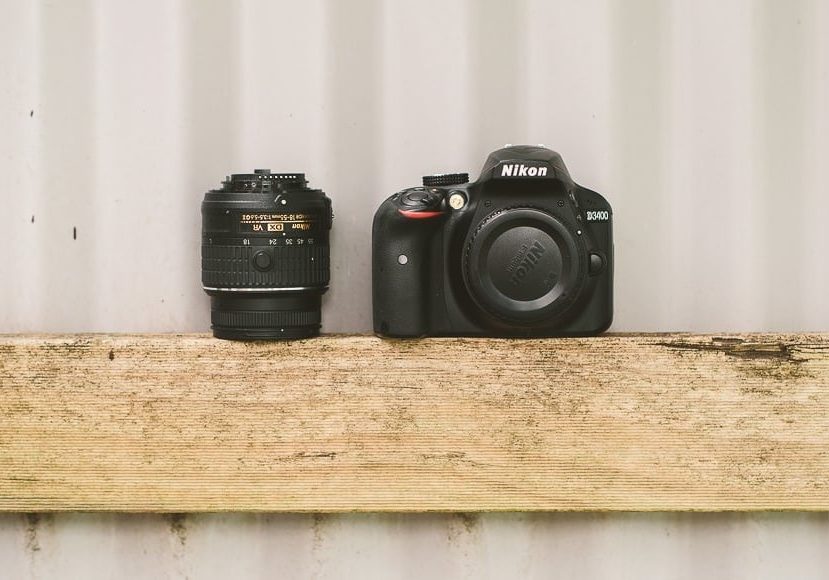
Nikon D3400 DSLR Camera Review
Check out this impartial and honest Nikon D3400 review by a professional photographer. Just how good is this sub-$500 DSLR camera?
Camera Reviews | Nikon Camera Reviews | Photography Gear Reviews | By Mark Condon | Last Updated: July 22, 2022
A Nikon D3400 review probably isn’t the first thing you’d expect to see on a website that’s mostly focused on camera gear for professional photographers!
Most of the reviews you’ll find on Shotkit are aimed at pros or serious hobbyist photographers, but with this review of the Nikon D3400, I wanted to take a step back.
Despite the growth in popularity of mirrorless cameras, basic DSLR cameras are still relevant for beginners.

Perfect starter DSLR camera for beginner photographers to grow with. Great image quality, battery life and shooting performance.
I started out with a cheap DSLR like the Nikon D3400, and highly encourage anyone interested in pursuing photography as a hobby (or one day as a profession), to learn the basics using an entry-level DSLR too.
So let’s dive into why the Nikon D3400 is still the best value for money DSLR of the year, and in my opinion, the best entry level DSLR too.
Nikon D3400 Review | Introduction
- Impressive autofocus
- Light and compact
- Affordable
- Handy Guide Mode for beginners
- Low-end build quality
- No microphone port
I included the Nikon D3400 in my recent guide to the best cameras under $500, naming it the best DSLR under $500 in 2018.
In order to back up my claim, I chose to use it as my main camera during the Christmas holidays, to find out whether it was capable of documenting moments that I’d usually entrust to a camera costing 2 or 3 times the amount.
It’s a broad generalization, but saying that cameras get better as they become more expensive is usually true.
‘Better’ can be defined as offering more convenience, simpler usability, higher image quality, more functionality, etc etc, but generally speaking, a sub-$500 camera will have difficulties out-performing a $1,000 camera.
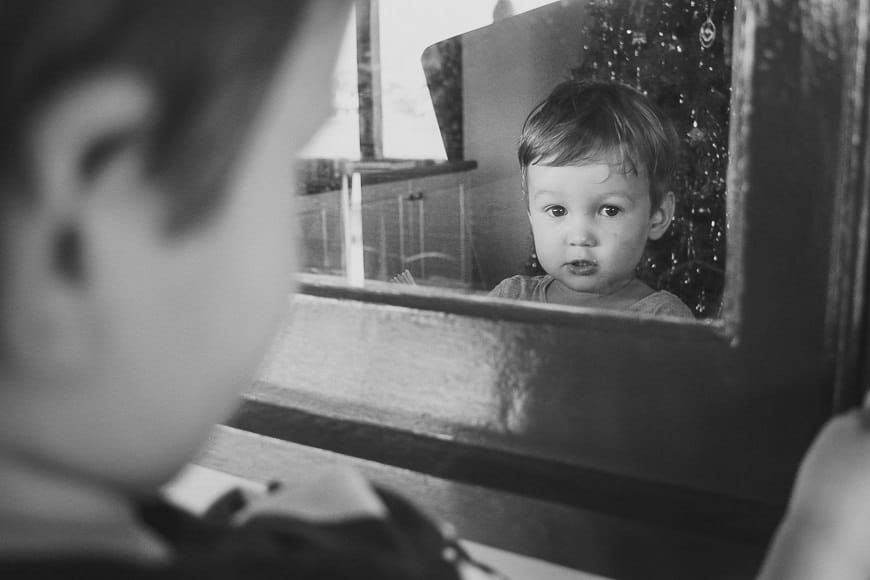
Nikon D3400 + 18-55mm f/3.5-5.6G | 1/200 at f/4 ISO 1600 @24mm
Having said this, would I be happy with the images produced by the a DSLR at the tail end of the Nikon range?
How would I fair with the most basic of ‘kit’ lenses, far inferior to those I’d normally use? (See a list of recommended lenses for the Nikon D3400.)
I had to keep reminding myself, this is where I started. Before I even knew the terms ‘full frame’, or ‘fast aperture’, a camera like this was all I knew.
Nikon D3400 Review | Features
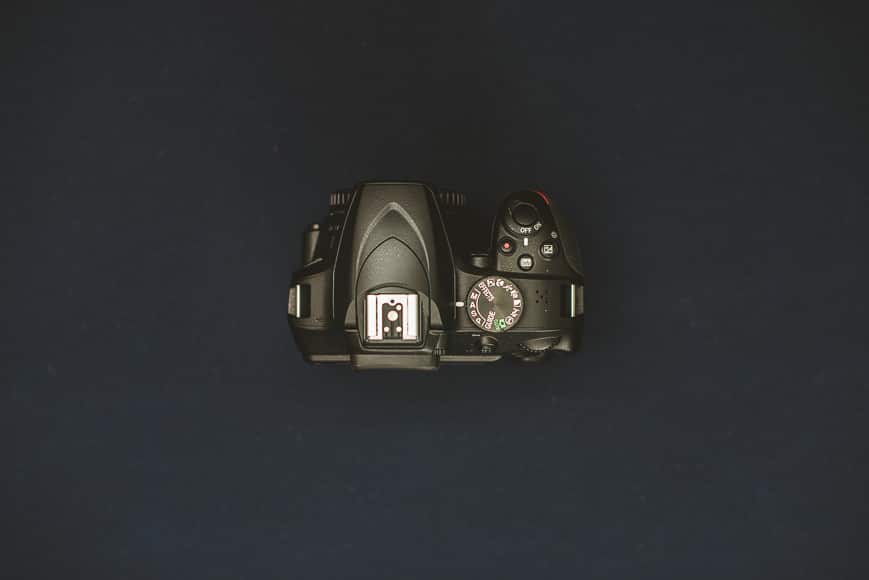
The D3400 is Nikon’s entry-level DSLR camera. It’s a modest update to the D3300, using the same 24MP APS-C CMOS sensor, EXPEED 4 image processor, full HD video capture and an easy-to-use interface that’s aimed at beginners – I actually believe this camera is currently the best camera for beginners out of all the comparatively priced cameras on the market.
There’s even a helpful Guide Mode, teaching you how to shoot in various situations – I would have loved a feature like this when I was starting out with photography.
The Nikon D3400 has an ISO range of 100-25600, an 11-point autofocus system and continuous shooting speeds of 5 fps.
There’s also the integration of Snap Bridge technology, Nikon’s foray into Bluetooth connectivity which caused mild ripples in the industry to say the least. It’s a gimmicky feature which transfers images to a smart phone as you shoot, albeit very sluggishly.
Bluetooth connectivity is also handy for taking remote photos using your smartphone, allowing you to set up the camera, then see what it sees via your phone, allowing you to be in a group photo, or trigger a shot from a distance.
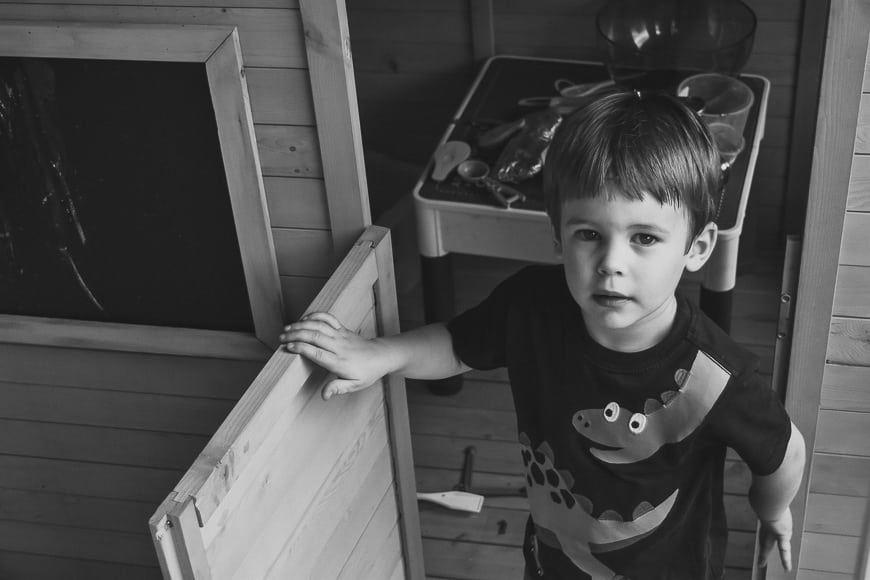
Nikon D3400 + 18-55mm f/3.5-5.6G | 1/640 at f/4.8 ISO 800 @36mm
The Nikon D3400 can be purchased in a well-priced bundle with a Nikon 18-55mm f/3.5-5.6G VR lens and a Nikon 70-300mm f/4.5-6.3G ED lens for a little less than $600.
However, I’d recommend the basic one lens bundle, featuring the camera body plus a Nikon 18-55mm f/3.5-5.6G VR. It’s not a great lens by any means, but it’s small, lightweight, delivers decent image quality and offers a flexible zoom range.
One of the main advantages of entry-level DSLRs is the size/weight. After shooting with the Nikon D3400 for 3 weeks, it was hard going back to my D750, which felt like a lead weight! (Incidentally, here’s the best small digital camera of the year.)
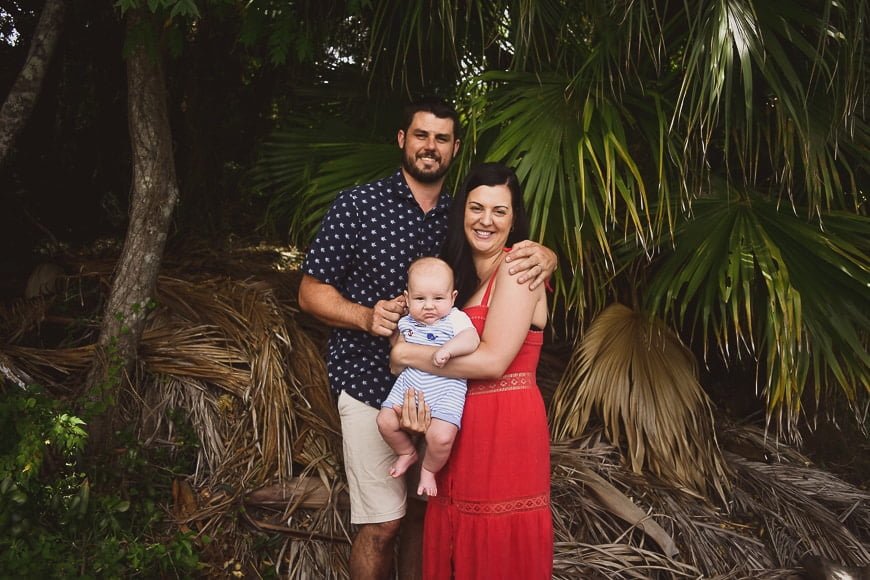
Nikon D3400 + 18-55mm f/3.5-5.6G | 1/640 at f/3.5 ISO 100 @18mm – even a cheap DSLR can be used for a family portrait session!
At roughly 500g with the lens attached, the Nikon D3400 is palm-able, and light enough to have around your neck all day.
Despite its compact size, its ergonomics are excellent, with well-placed physical dials and a rubberised grip that’s comfortable to use.
The ergonomics of Nikon DSLRs was the main reason I started off with Nikons back in the day. I don’t have an issue with Canon, but Nikons and their dial placement just suit my hands better.
This being a stills-photography review, I won’t go into the video capabilities of the D3400 – suffice to say it offers 1080 capture, but auto-focus performance in Live View will drive you nuts.
DSLRs at this price point are not intended for video recording, so let’s skip ahead…
Nikon D3400 Review | Operation
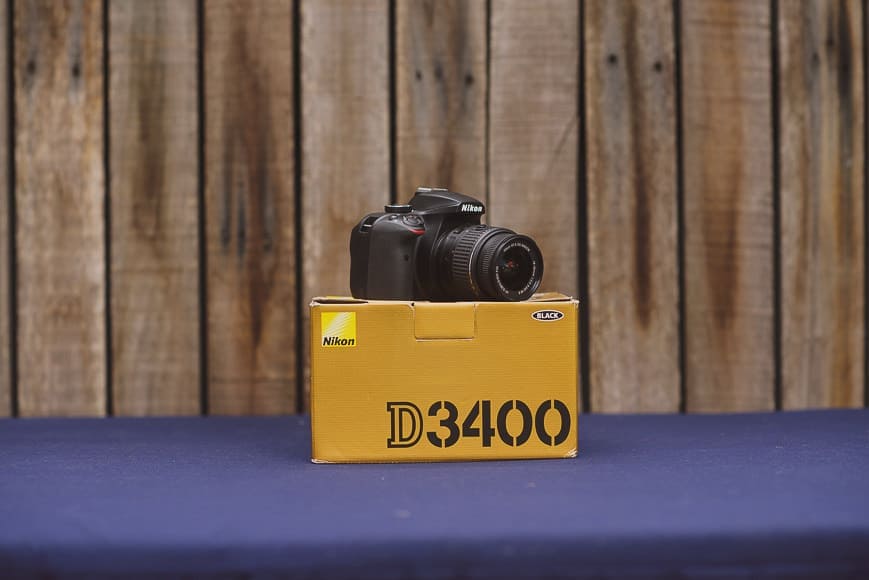
Since I’m used to a camera costing 4x the price of the Nikon D3400, I admit to feeling somewhat frustrated when I used this entry-level DSLR for the first time.
Moving the AF point around the small optical viewfinder felt slow, and the coverage of the 11 focus points very sparse indeed.
However, after realising how much I’d been spoiled with professional-grade camera gear over the years, I persisted, using the Nikon D3400 everyday until it felt like the only camera I’d ever used.
After all, in order to do an honest Nikon D3400 review, I had to put myself in the shoes of a beginner photographer – someone who was touching a DSLR for the very first time.
Yes, the 11 focus points which only cover the centre of the frame are limiting, but only if you’re used to manually moving AF points to place off-centre, for example on the rule-of-thirds guide lines.
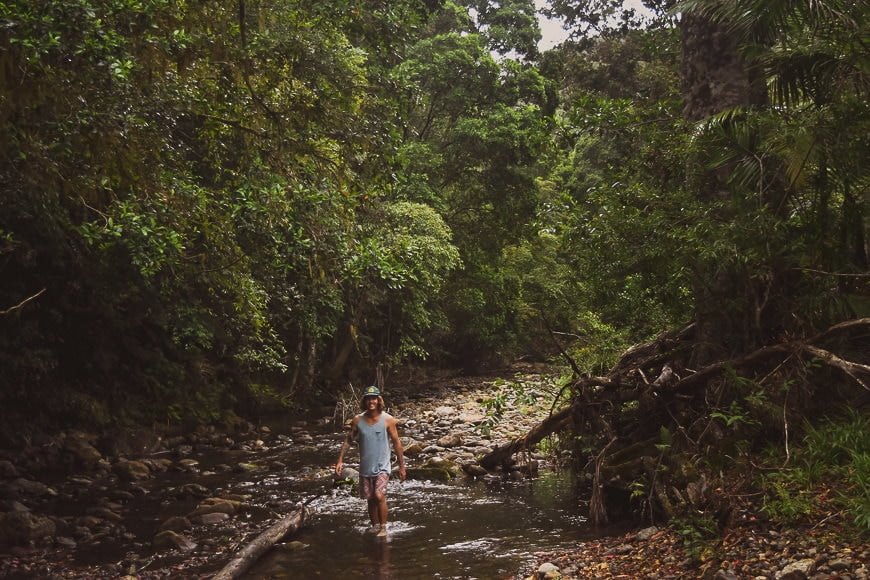
Nikon D3400 + 18-55mm f/3.5-5.6G | 1/250 at f/4.2 ISO 800 @28mm
Then I remembered that as a beginner, it’s more common to use the focus/recompose technique, which basically allows you to use an AF point to grab focus, then recompose to any composition you wish.
Using the kit lens with its forgiving f/3.5-5.6 aperture, it’s unlikely that recomposing will throw your subject out of focus (due to a deeper depth of field), making the technique effective enough to use every time.
On the topic of aperture, f/3.5-5.6 on the kit lens refers to how the aperture will change automatically as you zoom the Nikon D3400’s lens – at 55 mm, you’re stuck at an aperture of f/5.6, which is doesn’t give much in way of bokeh.
You can still achieve that coveted bokeh-look (which separates the foreground subject from the background, or vice-versa), but you need to be as close to the subject as possible for it to be noticeable.

Nikon D3400 + 18-55mm f/3.5-5.6G | 1/500 at f/4 ISO 1600 @24mm – here you can see the bokeh on the out-of-focus foreground subject is smooth and not too distracting.
Blurring background or foreground elements (‘bokeh’), is one way to achieve a three-dimensional image, and professional photographers with ‘fast’ lenses (i.e. lenses with larger apertures – f/2.8, f/2, f/1.8 etc.) often shoot ‘wide open’, since the end result with elements in and out of focus is visually pleasing.
With a ‘slower’ lens such as the ones that typically come with entry-level cameras like the Nikon D3400, getting a nicely blurred background is more challenging, but still possible.
You can also experiment with other ways to get a three-dimensional-look, such as trying to find contrasting light – this is hopefully what you’ll see in some of my sample photos.
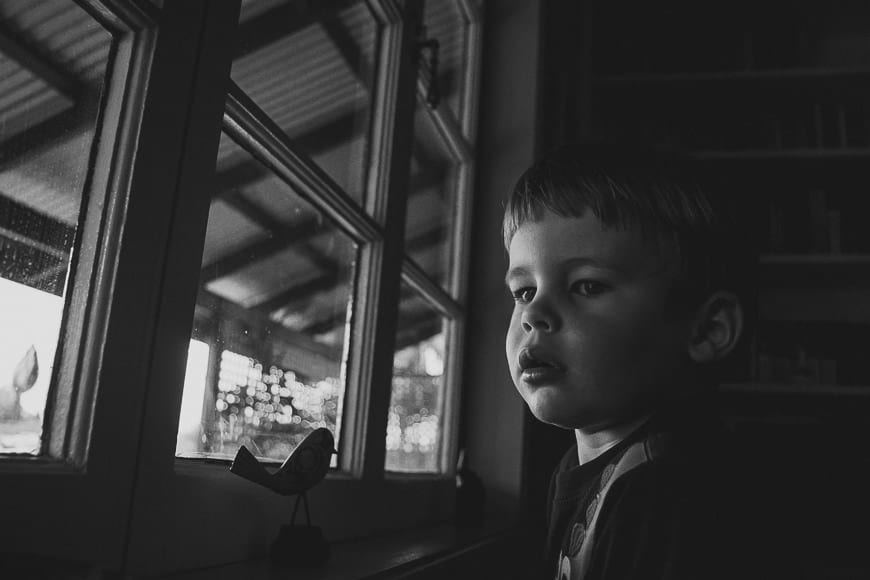
Nikon D3400 + 18-55mm f/3.5-5.6G | 1/1000 at f/4 ISO 1600 @22mm – placing a light object in front of a darker one can help give an image depth.
Autofocus performance on the Nikon D3400 is impressive, finding and locking on to a subject quickly and effortlessly.
When you hold down the shutter button in continous mode, you can fire off 5 frames per second – maybe not particularly impressive by today’s standards, but it’s more than enough to capture a fast moving subject.
Nikon D3400 Review | Image Quality
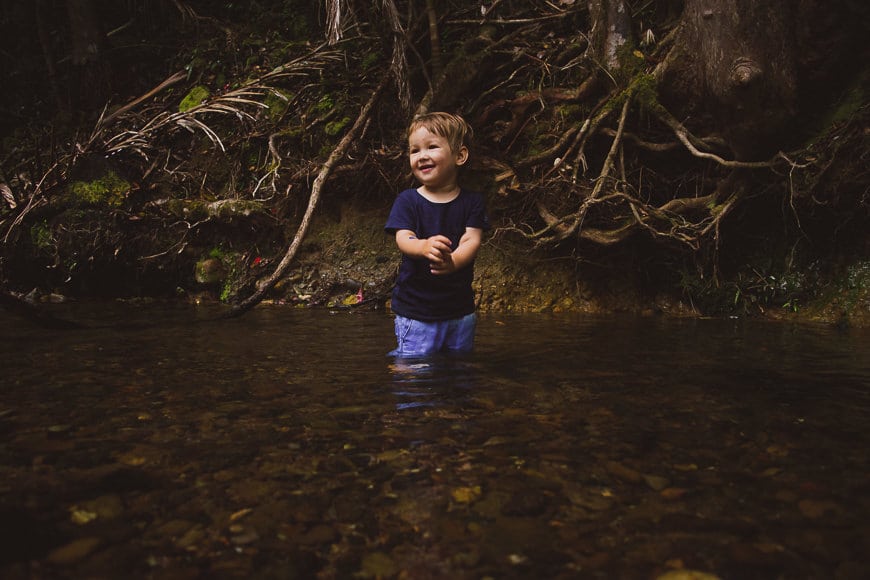
Nikon D3400 + 18-55mm f/3.5-5.6G | 1/250 at f/4 ISO 800 @18mm
The 24MP APS-C sensor inside the Nikon D3400 offers excellent RAW and JPEG performance. I shot in JPEG + RAW mode for the sake of comparison for this review, but found myself happy with the JPEG conversions 99% of the time.
White balance was just as good as my Nikon D750, and skin tones in even light were surprisingly on par too! I didn’t experiment too much in low light due to the limitations of the ‘slow’ lens, but pushing ISO up to 6400 offered noise-free images.
The sample images in this review have all been edited from either JPEG or RAW files in one click, using these free Lightroom presets.
I’ve also included all the unedited JPEGs and RAWs here for you to download and examine for yourself. It’s good to be able to see the kind of image you can expect straight out of the Nikon D3400, with no editing whatsoever.
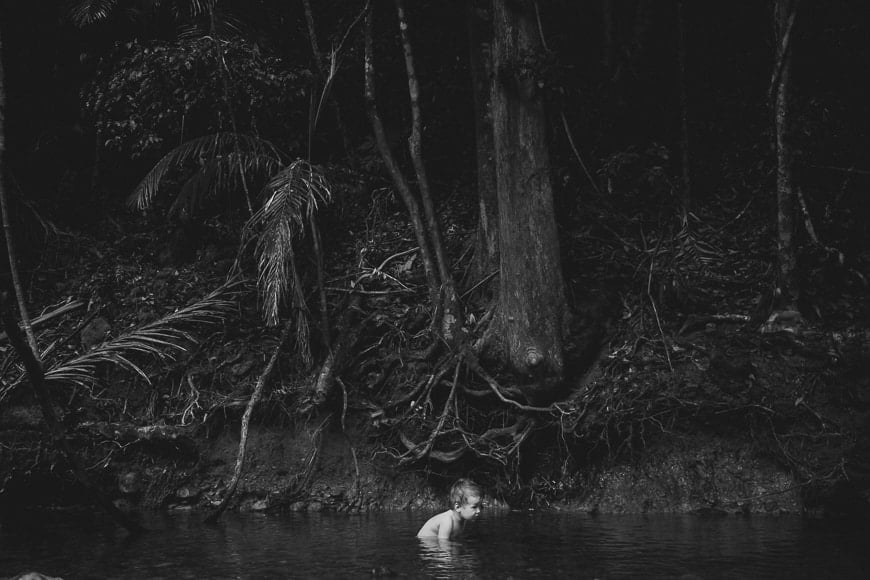
Nikon D3400 + 18-55mm f/3.5-5.6G | 1/250 at f/4 ISO 800 @22mm – using contrasting light helps to render a more 3D-look to an image. B&W can sometimes greater the effect, by eliminating distracting colours.
It’s worth remembering at this point that all the images seen here were taken with the Nikon 18-55mm f/3.5-5.6G VR lens that comes bundled with the Nikon D3400.
My first piece of advice to entry-level DSLR camera owners is to upgrade from the kit lens as soon as they feel comfortable, since other lens options can literally double the capabilities of the camera. I’ll speak more about this in a bit…
Incidentally, a 24MP image can be blown up to about 40 x 60″ at 300dpi and still retain good detail. This is likely way bigger than you’re ever likely to want to print a photo, but another advantage of having lots of Megapixels is the ability to ‘crop’ into your photo.
I did enjoy the flexibility of the 18-55mm zoom lens, which takes you from a ‘story-telling’ wide angle lens to a tight crop, helping to highlight an element of a photo, all in one quick turn of the lens.

Nikon D3400 + 18-55mm f/3.5-5.6G | 1/640 at f/4.8 ISO 800

Nikon D3400 + 18-55mm f/3.5-5.6G | 1/80 at f/5.6 ISO 1600 @55mm
Whilst it’s preferable to nail the correct composition in-camera, sometimes it’s not always possible, or perhaps you’ve brought along the wrong lens for the job.
By cropping, you’re able to simulate a digital zoom, or trim off unwanted areas of your original compostion.
The relatively high Megapixel count of the Nikon D3400 help to make this possible whilst retaining adequate image quality.
You should also read our comparison of the Nikon D3400 vs D3500 to see whether the slight improvement in image quality is worth the difference in price.
Nikon D3400 Review | Recommendations

Nikon D3400 + 35mm f/1.8G | 1/1600 at f/1.8 ISO 800 – Using a ‘fast’ prime lens such as this 35mm offers shallower depth of field, and that coveted ‘blurred-background’ look.
If you’re interested in starting photography as a hobby, I wouldn’t hesitate in recommending the Nikon D3400 to you.
Call me old fashioned, but learning photography on a DSLR with basic functionality is important, despite the high-tech that’s available elsewhere in the market.
Mirrorless cameras may offer better bang for the buck, and features such as the EVF, high frame rate, focus peaking etc. can make shooting easier… but for someone wanting to learn photography, opting for the latest high-tech gadgetry is a bit like skipping ahead.
Even F1 drivers start off in go-karts…
As far as entry-level DSLR cameras go, the Nikon D3400 is the best DSLR available in 2018. It offers full manual exposure controls to help you learn the basics of photography, then switch to an Auto setting for your convenience.

Nikon D3400 + 18-55mm f/3.5-5.6G | 1/125 at f/4 ISO 1600 @18mm – Smaller apertures (f/4) can tell a foreground and background story in one frame.
My preference for professional work is to shoot in ‘Aperture priority’, which is kind of like a mixture of automatic/manual.
On the Nikon D3400, I was able to do the same, choosing the aperture and ISO for myself, then letting the camera choose the shutter speed, all the while adjusting exposure as necessary.
My single biggest recommendation if you purchase the Nikon D3400 is to invest in a prime lens.
The kit lens is a good starting point, and can produce excellent results, but buying something like the Nikon 35mm f/1.8G will really open up the doors to what this camera is capable of.
Shooting with a kit lens on an entry-level DSLR is fine initially, but to do so for the life of the camera is like trying to drive fast with a dirty windscreen.
If you think you’ll be upgrading one day to a ‘full frame’ camera, you may even want to invest in the Nikon 35mm f/1.8G ED (one of the best Nikon lenses), which can be used on the Nikon D3400 (as a 50mm equivalent), as well as on a full frame cameras as a native 35mm lens.
Nikon D3400 Review | Final Words

Nikon D3400 + 18-55mm f/3.5-5.6G | 1/250 at f/4 ISO 800 @20mm | Pose: model’s own :p
In this Nikon D3400 review, I tried my best to distance myself from my status as a pro photographer who has access to some of the best cameras in the world.
I wanted to remember how I felt when I shot my first ever photo-a-day project with my trusty Nikon D40, an entry-level camera, which felt almost identical to the Nikon D3400.
After I’d dismissed any prejudices and swallowed my pride, it was easy to have fun with the Nikon D3400.
I’m confident that any newcomer to photography who wants a tool to capture images far superior than their fancy smartphone will be very happy with the D3400.
You can learn photography on any level of DSLR camera, and thankfully, the Nikon D3400 allows you to do this with a low barrier to entry. For these reasons, it’s still easily the best DSLR camera under $500 in my opinion.

Perfect starter DSLR camera for beginner photographers to grow with. Great image quality, battery life and shooting performance.





